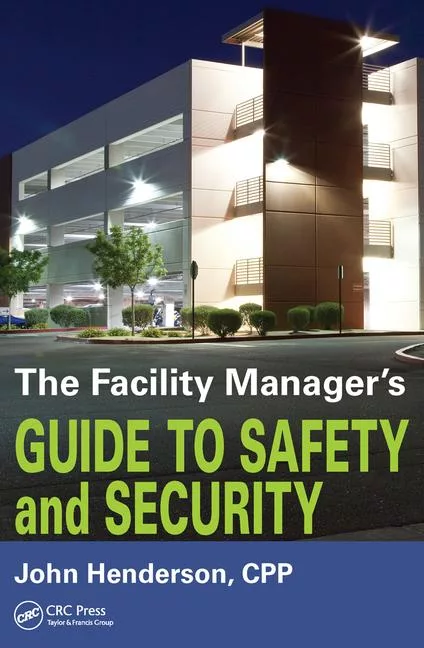The Role of Training in Insurance and Risk Management Planning
Well-trained officers can be one of the most effective risk management tools for security firms. Proper training can prevent accidents, improve performance and minimize the number of incidents that can lead to costly lawsuits.
However, as the private security profession has grown over the past decade, training standards and industry regulation have not improved at the same pace. As a result, many security professionals find themselves under-trained and over-exposed to risk, liability and litigation – exposures that can have significant impact on the cost and availability of insurance.
A Growing Need
The U.S. government estimates that the security guard industry has grown between seven and 12 percent a year, and that growth is expected to continue. Perhaps the most significant reason for the anticipated growth is the recent budget cuts that have caused municipal and county police agencies to downsize.
Though there is no single database with the total number of jobs that have been lost due to budget cutbacks, a Department of Justice report titled “The Impact of the Economic Downturn on American Police Agencies” published these statistics:
• The Fraternal Order of Police documents 4,000 layoffs, but estimates between 12,000 and 15,000 sworn officer positions have been lost.
• The International Association of Chiefs of Police estimates that 10,000 law enforcement positions have been lost.
• COPS Hiring Program data for the last 18 months estimates that 5,738 state, local and tribal law enforcement officers have been laid off. The actual number may be as high as 10,000.
• Major Cities Chiefs Association found that 52 percent of agencies surveyed had laid off sworn officers.
Private, contracted security officers are needed to fill the gaps left by the cuts in both sworn and unsworn officers among counties and municipalities. This need applies to many types of facilities, including gated communities, malls and other venues that formerly enjoyed a police presence or routine patrols.
Establishing Training Standards
As the need for private security officers grows, so does the need for training. And that training should be held to high, consistent standards, explains Jeffrey A. Slotnick, PSP, CPP, president of Setracon Inc., and chairman of the ASIS International Physical Security Council. He points out that training standards vary from state to state, with some states lacking any training standards.
“What’s needed most is quality, fundamental training where everyone is trained to a standard, and that just does not exist today,” he says. “The risks faced by security professionals have not changed much over the years, but the public now has higher expectations and those expectations include increased competence.”
Budgets sometimes restrict how much training security firms are willing to provide for their guards, but Slotnick says there are new affordable alternatives. “Web-based, interactive learning portals are definitely a cost-effective method of training officers and should be considered.”
Situational Training
Beyond training standards, there also needs to be situational training specific to the risk involved in any given industry. Security firms must look at the position and ensure they hire officers who are properly trained and equipped for the needs of the position.
Guards in a gated community clearly need a different set of skills than someone in a hospital. Guards at a manufacturing facility have different responsibilities than those at a nuclear facility. Guards on board ships with anti-piracy responsibilities should be trained differently than those assigned to armored cars.
Situational training also helps ensure that guards can make quick decisions such as the proper use of force. That issue was highlighted by the well-publicized 2010 Seattle bus station incident. There, a young victim found herself in a life-threatening situation and received little to no help from officers on duty, whose orders were to only “observe and report.”
The underlying problem was not that the officers couldn’t intervene physically. Rather, it was that they were not trained properly. The officers should have been trained to respond with more authority, communicate properly and act with speed.
Hands-on, situational training gives officers a chance to learn from practicing in situations that apply directly to the facilities they protect. This is recognized by more companies, which now are requiring that any security officers from contracted private firms have this type of training.
Documentation and Litigation Awareness
Education and training should also be provided to help security professionals understand and prevent lawsuits. “Litigation awareness” should focus on several components, including acting with professionalism and communicating respectfully and effectively. In short, guards should understand how their actions can affect the likelihood of a lawsuit.
This type of education should cover how litigation works, teaching guards what happens in a courtroom and how their words and actions can be used to affect a case. It should also cover the importance of conducting themselves in a professional way throughout their work day.
Another important factor is communications: teaching guards what is appropriate and not appropriate to say. For example, if someone slips and falls at a pool in a gated community, it would not be wise for a guard to mention to the victim or witnesses that there had been similar accidents. Such a statement could lead to a lawsuit and strengthen the case against the organization.
Documentation is another key skill in a security officer’s training. When accidents or incidents occur, proper documentation can go a long way in showing that the security firm acted appropriately. Key issues include providing accurate and complete activity and incident reports, including all relevant facts and record of all guard activity. These reports provide a detailed record that officers are carrying out duties according to the firm’s contract and are responding according to their orders.
Finally, report writing should be included in training, with an emphasis on proper spelling and grammar. Incomplete or sloppy reports can reflect badly on a guard firm’s professionalism and credibility, and weaken the firm’s case in the event of a lawsuit.
The Insurance Perspective
Insurers understand the importance of training on safety and risk management. When reviewing insurance applications, insurers not only look at loss history, but also the type of training provided to employees. They check to see if it covers just the state minimum or whether the training is more comprehensive. These factors help determine insurance rate and premiums paid.
In recent years, some security firms may not have seen how safety, loss control or training has affected their rates or eligibility. That’s because we are in what is called a “soft” insurance market. In this type of market, it is easy to get coverage from a wide variety of insurance carriers and rates are very low. In a soft market, good loss experience and training will not lower rates as much.
However, safety will become more significant when the insurance cycle turns and we reach what is called a “hard” market. In a hard market – which many experts believe is beginning in 2012 – insurance rates rise and many insurance carriers withdraw from specialty markets like security. With fewer carriers left writing insurance, eligibility standards and rate criteria become more stringent.
Insurers know that better-trained security professionals have fewer accidents, handle incidents more effectively and are a better risk. This is an important message, especially as the need for private security and the demand for insurance is expected to grow. Security professionals should examine their current training practices, identify areas for improvement and find training and education programs that will make them an excellent insurance risk.
Looking for a reprint of this article?
From high-res PDFs to custom plaques, order your copy today!







